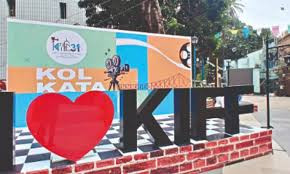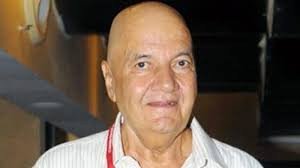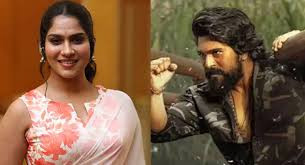Diljit Dosanjh Opens Up on Punjab Pride, Cartels, and Cultural Repatriation After Met Gala Backlash
IIE DIGITAL DESK : Mumbai, June 26, 2025 — Punjabi superstar Diljit Dosanjh, currently navigating the buzz around his upcoming film Sardaarji 3, has sparked heartfelt discourse following his candid BBC Asian Network interview. The internationally acclaimed singer-actor addressed criticism over his focus on Punjab rather than all of India, and made bold claims against luxury brand Cartier, accusing it of “stealing” the iconic Maharaja of Patiala’s necklace.
During the interview, Dosanjh spoke emotionally about representing his home state—recalling how wearing a cape emblazoned with a map of Punjab and Gurmukhi script at this year's Met Gala brought him to tears. “Punjab is going there, and a turban being represented there, that’s huge,” he emphasized, clarifying his intention was never political but deeply personal .
He pushed back against naysayers who say he speaks only of Punjab, stating frankly, “I am Punjabi, what can I say?” He went further: “Anyone who says they’re doing something for others is lying. Everyone’s working for themselves,” adding a philosophical touch by noting how growth brings emotional evolution—and perhaps a way past being disliked .
Clearly unwilling to mince words, Dosanjh accused Cartier of appropriating the historic Patiala Necklace. He revealed he had requested the famed piece for his red-carpet tribute but was refused, being told it was relegated to a museum exhibit. He lamented, “It was ours, they stole it,” prompting him to commission a replica to complete his homage .
The necklace in question was originally crafted in 1928 for Maharaja Bhupinder Singh by Cartier, featuring 2,930 diamonds and the De Beers—the world’s seventh-largest yellow diamond—before disappearing post-1948. It resurfaced piecemeal, later restored with synthetic alternatives, and loaned to Western figures like YouTuber Emma Chamberlain in 2022—leaving some to question why Dosanjh’s similar request was denied.
Diljit’s Met Gala appearance represented a watershed moment: India’s cultural imagery on one of fashion’s grandest stages. Crafted by Prabal Gurung and accessorized with traditional icons like a turban and ceremonial sword, the ensemble drew mixed reactions. While trending as a bold nod to heritage, critics online labeled it “costume cosplay,” questioning its alignment with the event’s theme “Superfine: Tailoring Black Style”.
Dosanjh defended his aesthetic as a tribute—not a gimmick—saying, “I wanted to honour my Punjabi culture.” For him, every milestone—from performing at Coachella and on The Tonight Show, to that Met Gala moment—transcends personal achievement, spotlighting Punjabi art and identity .
The interview coincides with criticism surrounding his film Sardaarji 3, notably objections over casting Pakistani actress Hania Aamir. Dosanjh clarified the filmmakers made the casting decision pre-dating the April Pahalgam terror attack and emphasized that overseas release strategy—particularly with cross-border content—was beyond his control .
At the heart of Dosanjh’s message is a call to celebrate Punjab’s global contribution. He reflected, “Punjab is such a wonderful place. It has been through so much, and yet it produces so many talented people. Perhaps Punjab is blessed, but perhaps it is also cursed”—resonating with his deep emotional investment .
With his bold stance on cultural representation and pointed critique of elite heritage custodians, Dosanjh is navigating complex crossroads—where identity, belonging, and the politics of fashion and heritage intersect on the world stage.
As audiences await Sardaarji 3 and track his rising influence—from Coachella to New York’s Met Gala—Diljit Dosanjh remains a powerful voice defining what it means to honor roots while commanding respect on international platforms.
You might also like!















